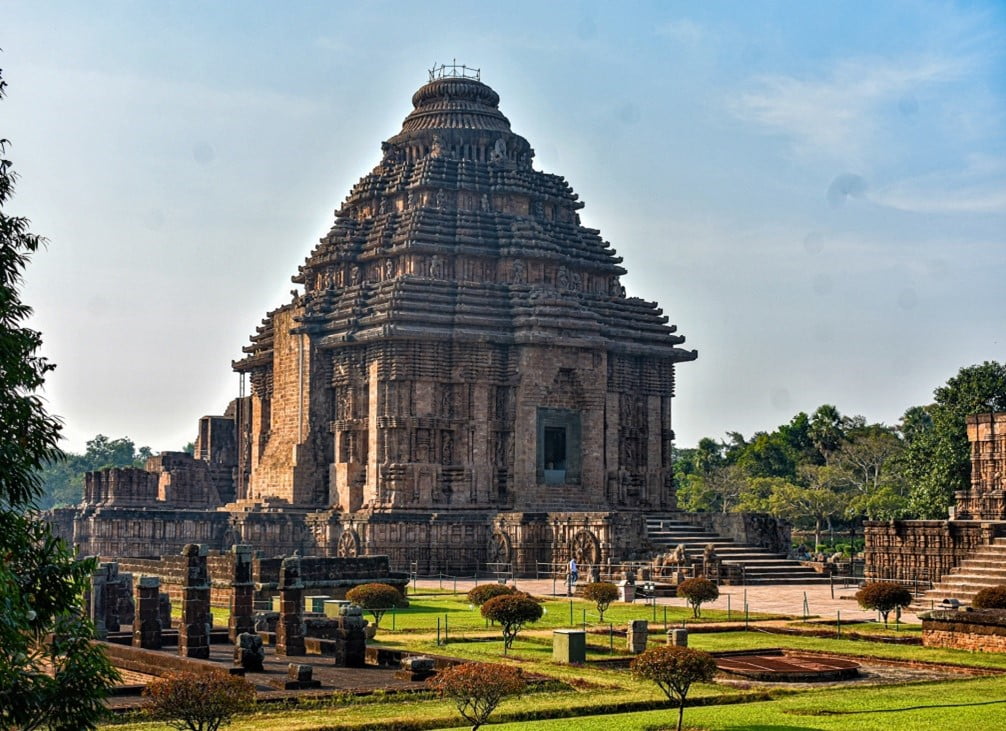History and Art and Culture
In News: Hampi, Khajuraho on list for G20 culture track.
- As part of India’s G20 Presidency between December 2022 and November 2023, the Government is planning to host five key meetings focusing on the “culture track” at Khajuraho, Bhubaneswar, Hampi and Agra.
- These cities have been chosen mainly for well-known monuments and UNESCO World Heritage Sites such as Taj Mahal and Agra Fort (UP), the Hindu and Jain temples of Khajuraho (Madhya Pradesh), the Konark Sun Temple around 65 km from Bhubaneswar (Odisha), and the sites at Hampi (Karnataka).
- For the culture track, a G20 Secretariat has been set up in the Ministry of Culture, which will hire a professional agency “for research, documentation and coordination work for the G20 work-stream of culture”.
This presidency also provides a fantastic opportunity for India to shape the global agenda on culture across multiple work streams and engagement areas. These include:
- protection and restitution of cultural property;
- advancement of traditional cultural practices for sustainable living;
- promotion of cultural and creative industries for livelihood generation; and
- preservation and dissemination of culture by leveraging technology.
UNESCO World Heritage Site
- A World Heritage Site is a place that is listed by UNESCO for its special cultural or physical significance.
- The list of World Heritage Sites is maintained by the international ‘World Heritage Programme’, administered by the UNESCO World Heritage Committee.
- There are 40 UNESCO World Heritage Sites in India.
- Dholavira and Ramappa Temple are the latest addition to the list under the ‘Cultural’ category. There are two more categories — Natural and Mixed.
Agra Fort (declared in 1983)
- 16th-century Mughal monument
- Fortress of red sandstone
- It comprises the Jahangir Palace and the Khas Mahal, built by Shah Jahan; audience halls, such as the Diwan-i-Khas

Taj Mahal
- The Taj Mahal (Agra) is a mausoleum of white marble built by the Mughal emperor, Shahjahan in memory of his wife Mumtaz Mahal. It stands on the banks of the river Yamuna.
- The Taj Mahal was declared a centrally protected monument of national importance in December 1920.
- Considered as one of the Seven Wonders of the World, it was inscribed on the list of World Heritage Sites in 1983.
- It is famous for its unique layout, perfection in symmetry and inlay work.
Group of Monuments at Hampi (1986)
- This site was the last capital of the kingdom of Vijaynagara Kingdom.
- These Dravidian temples and palaces were built by rulers of Vijaynagara between the 14th and 16th centuries.
- In 1565, the city was captured by Deccan Muslim Confederacy and pillaged for a period of 6 months, before being abandoned.

Khajuraho Group of Monuments (1986)
- These temples were built during the Chandella dynasty, which reached at its pinnacle between 950 and 1050.
- Only 20 temples remain, belonging to two different religions namely-Hinduism and Jainism, including the famous Temple of Kandariya decorated with intricately and beautifully carved sculptures.

Konark Sun Temple in Odisha (1984)
- Built in the 13th century, the Konark temple was conceived as a gigantic chariot of the Sun God, with 12 pairs of exquisitely ornamented wheels pulled by seven horses.
- It was built by King Narasimhadeva I, the great ruler of Ganga dynasty.
- The temple is perfect blend of Kalinga architecture, heritage, exotic beach and salient natural beauty.

Source: Indian Express
Previous Year Question
Q.1) Which of the following is/are famous for Sun temples? (2017)
- Arasavalli
- Amarakantak
- Omkareshwar
Select the correct answer using the code given below:
- 1 only
- 2 and 3 only
- 1 and 3 only
- 1, 2 and 3














